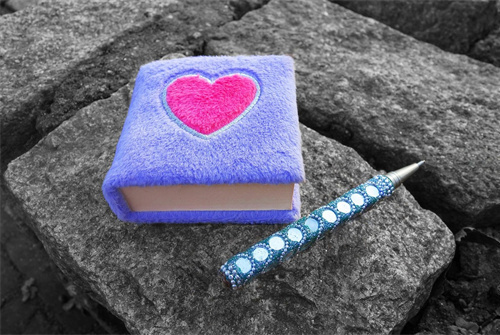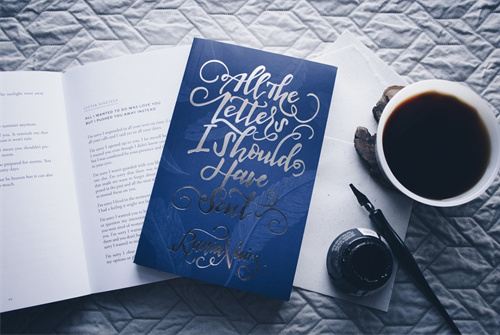春節(jié)習(xí)俗英文

中國的年俗文化源遠流長,全國各地衍生出紛繁多樣的過年習(xí)俗,南北迥異,各成一派。但是,備年貨、送年禮卻是幾乎全國上下的“過年必備”。中國的家庭過年前要購買大量的“年貨”,春聯(lián),福字,新衣服,過年期間的食品(過年市場多不開門)。辦年貨是中國人過春節(jié)的一項重要活動。
Chinese New Year custom culture has a long history. Various Chinese New Year customs have been developed all over the country. The North and the South are quite different and each has its own school. However, the preparation of New Year's Goods and the delivery of New Year's gifts are "necessary" for almost the whole country. Chinese families buy a lot of "New Year's Goods". Spring Festival couplets, lucky characters, new clothes and food during the Spring Festival (the market is mostly closed). Holding New Year's Goods is an important activity for Chinese people to celebrate the Spring Festival.
貼春聯(lián):Post new year's scrolls
年【第28句】:二十九或三十日家家戶戶貼“年紅”,年紅亦稱春聯(lián)。根據(jù)《玉燭寶典》、《燕京歲時記》等著作記載,春聯(lián)的原始形式就是人們所說的“桃符”。唐朝以后,除了以往的神荼、郁壘二將以外,人們又把秦叔寶和尉遲恭兩位唐代武將當(dāng)作門神。貼春聯(lián)也叫貼門對、春貼、對聯(lián)、對子、桃符等,它以工整、對偶、簡潔、精巧的文字描繪時代背景,抒發(fā)美好愿望,是中國特有的文學(xué)形式。每逢春節(jié),無論城市還是農(nóng)村,家家戶戶都要精選一幅大紅春聯(lián)貼于門上,為節(jié)日增加喜慶氣氛。據(jù)說這一習(xí)俗在明代開始盛行,到了清代,春聯(lián)的思想性和藝術(shù)性都有了很大的提高。
On the 28th, 29th or 30th of the year, every household sticks "Nian Hong", which is also called Spring Festival couplet. According to the records of "Jade Candle Treasure Book" and "Yan Jing Sui Shi Ji", the original form of Spring Festival couplets is what people call "peach charm". After the Tang Dynasty, in addition to the former Shen Tea and Yu Lei generals, Qin Shubao and Lieutenant Chi Gong were regarded as the gate gods of the Tang Dynasty. Spring couplets are also called door-pasting couplets, spring-pasting couplets, couplets, couplets, peach symbols and so on. They describe the background of the times in neat, dual, concise and exquisite words and express good wishes. They are unique literary forms in China. Every Spring Festival, whether in urban or rural areas, every household should select a red spring couplet to paste on the door, to increase the festive atmosphere. It is said that this custom began to prevail in the Ming Dynasty. By the Qing Dynasty, the ideological and artistic quality of Spring Festival couplets had greatly improved.
剪窗花:Cut window flower
在民間人們還喜歡在窗戶上貼上各種剪紙——窗花。窗花不僅烘托了喜慶的節(jié)日氣氛,也集裝飾性、欣賞性和實用性于一體。在貼春聯(lián)的同時,一些人家要在屋門上、墻壁上、門楣上貼上大大小小的“福”字。春節(jié)貼“福”字,是中國民間由來已久的風(fēng)俗。“福”字指福氣、福運,寄托了人們對幸福生活的向往,對美好未來的祝愿。有的人干脆將“福”字倒過來貼,表示“幸福已到”、“福氣已倒(到)”。其實福字不能倒貼,特別大門,是迎福納福的地方,福字應(yīng)該正貼。民間還有將“福”字精描細(xì)做成各種圖案的,圖案有壽星、壽桃、鯉魚跳龍門、五谷豐登、龍鳳呈祥等。
In the folk people also like to paste various paper-cuts on the windows - window flowers. Window decoration not only sets off the festive atmosphere, but also integrates decoration, appreciation and practicability. While pasting Spring Festival couplets, some families have to paste the word "happiness" on their doors, walls and lintels. Spring Festival sticking the word "Fu" is a long-standing folk custom in China. The word "luck" refers to luck and good luck. It expresses people's yearning for a happy life and wishes for a better future. Some people simply put the word "happiness" upside down to indicate that "happiness has arrived" and "happiness has fallen (arrived)". In fact, the word "Fu" can not be pasted upside down, especially at the gate, where the word "Fu" should be pasted correctly. Folk people also have the word "Fu" carefully drawn into various patterns, such as longevity star, longevity peach, carp leaping Longmen, Wugu Fengdeng, Longfeng Chengxiang and so on.
掛年畫:Hanging New Year pictures
春節(jié)掛貼年畫在城鄉(xiāng)也很普遍,濃黑重彩的年畫給千家萬戶平添了許多興旺歡樂的喜慶氣氛。年畫是中國的一種古老的民間藝術(shù),反映了人民樸素的風(fēng)俗和信仰,寄托著他們對未來的希望。年畫,也和春聯(lián)一樣,起源于“門神”。
Spring Festival hanging New Year pictures are also common in urban and rural areas. The thick black and colorful New Year pictures add a lot of prosperous and happy atmosphere to millions of families. New Year's pictures are an ancient folk art in China. They reflect the simple customs and beliefs of the people and place their hopes on the future. New Year pictures, like Spring Festival couplets, originate from "door gods".
隨著木板印刷術(shù)的興起,年畫的內(nèi)容已不僅限于門神之類單調(diào)的主題,變得豐富多彩,在一些年畫作坊中產(chǎn)生了《福祿壽三星圖》、《天官賜福》、《五谷豐登》、《六畜興旺》、《迎春接福》等精典的彩色年畫、以滿足人們喜慶祈年的美好愿望。中國出現(xiàn)了年畫三個重要產(chǎn)地:蘇州桃花塢,天津楊柳青和山東濰坊;形成了中國年畫的三大流派,各具特色。民國初年,上海鄭曼陀將月歷和年畫二者結(jié)合起來。這是年畫的一種新形式。這種合二而一的年畫,以后發(fā)展成掛歷,至今風(fēng)靡全國。
With the rise of wood printing, the content of New Year's pictures is not limited to monotonous themes such as door gods. It has become rich and colorful. In some New Year's paintings workshops, some classic colorful New Year's pictures such as "Three Stars of Fortune and Life", "Heavenly Official Blessing", "Five Grain Fengdeng", "Six Animals Prosperity", "Welcoming Spring and Receiving Fortune" have been produced to meet people's good wishes of celebrating and praying for the New Year. There are three important origins of Chinese New Year Pictures: Taohuawu in Suzhou, Yangliuqing in Tianjin and Weifang in Shandong, which have formed three major schools of Chinese New Year Pictures with their own characteristics. In the early years of the Republic of China, Zheng Mantuo in Shanghai combined the calendar and the New Year's pictures. This is a new form of New Year's pictures. This new year's picture, which combines two and one, developed into a calendar and has become popular throughout the country.
春聯(lián)的種類比較多,貼法也多,依其使用場所,可分為門心、框?qū)ΑM披、春條、斗方等。“門心”貼于門板上端中心部位;“框?qū)?rdquo;貼于左右兩個門框上;“橫披”貼于門媚的橫木上;“春條”根據(jù)不同的內(nèi)容,貼于相應(yīng)的地方;“斗斤”也叫“門葉”,為正方菱形,多貼在家俱、影壁中。
There are many kinds of spring couplets and many sticking methods. According to their places of use, they can be divided into door center, frame pair, horizontal cloak, spring strip, fighting square and so on. "Door heart" is affixed to the central part of the upper part of the door panel; "frame pair" is affixed to the left and right doorframes; "horizontal cloak" is affixed to the door-mei's horizontal wood; "spring strip" is affixed to the corresponding place according to different contents; "Doujin" is also called "door leaf", which is a square diamond, mostly affixed to furniture and shadow wall.
年夜飯:Family reunion dinner
年夜飯又稱年晚飯、團年飯、團圓飯等,特指農(nóng)歷除夕晚餐。年夜飯來源于古代的年終祭祀儀禮。一年一度的年夜飯對中國人是極其重要的,一家老小互敬互愛、共敘天倫,圍坐餐桌旁,倍感幸福。人們十分注重除夕的“團年飯”,除合家團圓、聚天倫之樂外,也祈求一家大小平安,在外工作的人都趕回來過新年。團年飯是過春節(jié)的重頭戲,不但豐富多彩,而且很講究意頭。吃團年飯前先祭祖或拜神,香燭燒完才開飯。席上一般有雞(寓有計)、魚(寓年年有余)、蠔豉(寓好市)、生菜(寓生財)、腐竹(寓富足)等以求吉利。
New Year's Eve dinner is also called New Year's dinner, Lunar New Year's dinner, Lunar New Year's dinner and so on, especially the Lunar New Year's Eve dinner. New Year's Eve dinner originates from the ancient year-end sacrificial rites. The annual New Year's Eve dinner is extremely important for Chinese people. A family of people, old and young, respects and loves each other, tells stories about each other, sits around the dining table and feels very happy. People attach great importance to the "reunion dinner" on New Year's Eve. In addition to family reunion and family reunion , they also pray for the safety of a family, and those who work outside rush back to celebrate the New Year. Lunar New Year's dinner is an important part of the Spring Festival. It is not only rich and colorful, but also exquisite. Before the Lunar New Year's dinner, ancestors worship ancestors or gods, and the incense candles are burned before the meal is served. On the table, there are chicken, fish, oyster sauce, lettuce and bamboo for good fortune.
壓歲錢:Lucky money
壓歲錢,春節(jié)習(xí)俗之一,年晚飯后長輩要將事先準(zhǔn)備好的壓歲錢分給晚輩,據(jù)說壓歲錢可以壓住邪祟,晚輩得到壓歲錢就可以平平安安度過一歲。壓歲錢在民俗文化中寓意辟邪驅(qū)鬼,保佑平安。壓歲錢最初的用意是鎮(zhèn)惡驅(qū)邪。因為人們認(rèn)為小孩容易受鬼祟的侵害,所以用壓歲錢壓祟驅(qū)邪。
New Year's money is one of the customs of the Spring Festival. After the New Year's dinner, the elders should distribute the money prepared in advance to the younger generation. It is said that New Year's money can suppress evil spirits, and the younger generation can live safely through the year. New Year's money in folk culture implies to ward off evil spirits and protect peace. The original intention of New Year's money is to suppress evil and exorcise evil spirits. Because people think that children are vulnerable to sneaking, they use lucky money to drive away evil spirits.
在歷史上,壓歲錢是分多種的,一般在新年倒計時時由長輩分給晚輩,表示壓祟,包含著長輩對晚輩的關(guān)切之情和真切祝福;另一種就是晚輩給老人的,這個壓歲錢的“歲”指的是年歲,意在期盼老人長壽。可追溯的最早壓歲錢在漢代,又叫壓勝錢,并不在市面上流通,而是鑄成錢幣形式的玩賞物,有避邪的功能。
Historically, New Year's money is divided into many kinds. Generally, it is distributed by the elders to the younger generation in the countdown to the New Year, which expresses pressure and contains the elders'concern and sincere wishes for the younger generation. Another kind is given to the elders by the younger generation. The "age" of this New Year's money refers to the age, which is intended to look forward to the elder's longevity. The earliest traceable lucky money in the Han Dynasty, also known as winning money, did not circulate on the market, but was coined into the form of toys, with the function of evading evil spirits.
守歲:Shou Sui
除夕守歲是最重要的年俗活動之一,守歲之俗由來已久。守歲的民俗主要表現(xiàn)為除夕夜燈火通宵不滅,守歲謂之“燃燈照歲”,即大年夜遍燃燈燭,所有房子都點上燈燭,還要專門在床底點燈燭,謂之“照虛耗”,據(jù)說如此照歲之后,就會使來年家中財富充實。古時南北風(fēng)俗各異,古時北方守歲習(xí)俗主要為熬年夜,如晉朝周處所著的《風(fēng)土記》中說:除夕之夜大家各相與贈送,稱“饋歲”;長幼聚歡,祝頌完備,稱“分歲”;終歲不眠,以待天明,稱“守歲”。有的地方在除夕之夜,全家團聚在一起,吃過年夜飯,點起蠟燭或油燈,圍坐爐旁閑聊,等著辭舊迎新的時刻,通宵守夜,象征著把一切邪瘟病疫照跑驅(qū)走,期待著新的一年吉祥如意。
New Year's Eve is one of the most important activities of the New Year's Eve. The custom of observing the New Year's Eve has a long history. The folk custom of keeping the lights burning all night on New Year's Eve is mainly manifested as "burning the lights to shine the year". That is to say, lighting the candles all over the New Year's Eve, lighting the candles all over the house, and lighting the candles under the bed, which is called "illuminating the waste". It is said that after such illumination, the wealth of the family in the coming year will be enriched. In ancient times, there were different customs between the north and the south. In ancient times, the custom of keeping up the old age in the North was mainly staying up late. As stated in the Book of Local Conditions written by Zhou Chu in the Jin Dynasty, on New Year's Eve, people gave each other gifts, which were called "feeding the old"; gathering young people and congratulating them on their perfection, which was called "dividing the old"; staying awake until the dawn of the day, which was called "keeping the old". In some places, on New Year's Eve, the whole family gathers together, eats New Year's Eve dinner, lights candles or oil lamps, sits around the stove chatting, waiting for the time of leaving the old and welcoming the new, and watches all night, symbolizing that all evil plagues and epidemics will be run away, expecting the good luck of the new year.
吃餃子:Eat dumplings
餃子,古稱“角子”,北方年夜飯有吃餃子的傳統(tǒng),但各地吃餃子的習(xí)俗亦不相同,有的地方除夕之夜吃餃子,有的地方初一吃餃子。三十晚上北方人不吃餃子,會覺得沒有過年的氣氛。北方一些山區(qū)還有初一到初五每天早上吃餃子的習(xí)俗。吃餃子是表達人們辭舊迎新之際祈福求吉愿望的特有方式。晚上11時到第二天凌晨1時為子時,“交子”即新年與舊年相交的時刻。餃子就意味著更歲交子,過春節(jié)吃餃子被認(rèn)為是大吉大利。另外餃子形狀像元寶,包餃子意味著包住福運,吃餃子象征生活富裕。與北方不同,南方的年夜飯通常有大魚大肉,佳肴盛宴。“魚”和“余”諧音,象征“吉慶有余”,也喻示著生活幸福,“年年有余”。
Dumplings, known as "jiaozi" in ancient times, have the tradition of eating dumplings for New Year's Eve dinner in the north, but the custom of eating dumplings varies from place to place. In some places, dumplings are eaten on New Year's Eve, and in some places, dumplings are eaten on the first day of the first lunar month. Thirty nights when people in the North do not eat dumplings, they will feel that there is no atmosphere for New Year's Day. There is also the custom of eating dumplings every morning from the first to the fifth day of junior middle school in some mountainous areas in the north. Eating dumplings is a unique way of expressing people's wishes for good luck when they leave the old year and welcome the new year. From 11:00 p.m. to 1:00 a.m. on the next day, "Jiaozi" is the time when the New Year intersects with the old year. Dumpling means giving birth at a new age, and eating dumplings during the Spring Festival is considered a good luck. In addition, dumplings are shaped like Yuan Bao. Making dumplings means wrapping luck and eating dumplings symbolizes prosperity. Unlike in the north, the New Year's Eve dinner in the south usually has big fish, big meat and a feast of delicacies. The homonym of "fish" and "Yu" symbolizes "more than lucky celebration". It also symbolizes the happiness of life, "more than every year".
吃湯圓:Eat dumplings
南方的元宵節(jié)慶食品叫做“湯圓”,在江蘇,上海等地,大年初一早晨都有吃湯圓的習(xí)俗。元宵節(jié),道教稱之為“上元節(jié)”。據(jù)元代伊土珍《(女郎)環(huán)環(huán)記》引《三余帖》記:嫦娥奔月后,羿思念成疾。正月十四日夜忽有童子求見,自稱為嫦娥之使,說:“夫人知君懷思,無從得降,明日乃月圓之候,君宜用米粉作丸,團團如月,置室西北方,叫夫人之名,三夕可降而。”羿如法而行,嫦娥果然降臨。可見元宵節(jié)吃元宵,是取“團團如月”的吉祥之意。清代康熙年間朝野盛行“八寶元宵”、馬思遠元宵。民國初年還有袁世凱因元宵與“袁消”音同,故下令禁喊元宵之事。
Southern Lantern Festival food is called "Tangyuan". In Jiangsu, Shanghai and other places, it is customary to eat Tangyuan on the morning of New Year's Day. The Lantern Festival is called Shangyuan Festival by Taoism. According to the Yuan Dynasty Yituzhen's "Girls" Ring Records quoted "Sanyu Tie" records: Chang'e flew to the moon, Yi missed sickness. On the fourteenth day and night of the first month, a boy called himself the envoy of Chang'e and said, "Madame knows your thoughts and can't get down. Tomorrow is the time of the full moon. You should use rice powder as a pill. You should have a reunion like the moon in the northwest of your room. It's called Madame's name. It can fall on March Eve." As Yi did, Chang'e came. It can be seen that eating Lantern Festival Lantern Festival is to take the auspicious meaning of "Tuan Tuan Ru Yue". During the reign of Kangxi in the Qing Dynasty, "Eight Treasures Lantern Festival" and "Ma Siyuan Lantern Festival" prevailed in the imperial and wild areas. In the early years of the Republic of China, Yuan Shikai also banned the chanting of the Lantern Festival because of the similarity between the Lantern Festival and Yuan Xiao.
看春晚:Look at Spring Festival Gala
中國人已經(jīng)離不開春晚,它也成為我們的新民俗。老人小孩看春晚圖個樂呵,中年人看春晚圖個安穩(wěn)踏實,而年輕人看春晚最大的樂趣,就是吐槽。
The Spring Festival Gala has become a new folk custom for Chinese people. The old children see the Spring Festival Gala, and the middle-aged people see the Spring Festival gala as steady and steady.
拜年:Pay New Year call
拜年是自古就傳承下來的年節(jié)文化傳統(tǒng),春節(jié)期間走訪拜年是春節(jié)傳統(tǒng)習(xí)俗之一,是人們辭舊迎新、相互表達美好祝愿的一種方式。隨著時代的發(fā)展,拜年的習(xí)俗亦不斷增添新的內(nèi)容和形式。拜年的意義所在是親朋好友之間走訪聯(lián)絡(luò)感情、互賀新年,表達對親朋間的情懷以及對新一年生活的美好祝福。
New Year celebration is a cultural tradition inherited from ancient times. Visiting New Year during the Spring Festival is one of the traditional customs of the Spring Festival. It is a way for people to say goodbye to the old and greet the new and express good wishes to each other. With the development of the times, the custom of New Year's greeting has also been adding new contents and forms. The significance of New Year's greeting lies in visiting and contacting feelings between relatives and friends, congratulating each other on the New Year, expressing feelings between relatives and friends, and wishing them good luck in the new year's life.
新年,人們都早早起來,穿上最漂亮的衣服,打扮得整整齊齊,出門去走親訪友,相互拜年,恭祝來年大吉大利。現(xiàn)代社會通行的賀年卡在中國古代已經(jīng)實行,早在宋代,皇親貴族士大夫的家族與親族之間已使用專門拜年的賀年片,叫做“名刺”或“名貼”。
New Year's Day, people get up early, wear the most beautiful clothes, dress neatly, go out to visit relatives and friends, exchange New Year's greetings, congratulations on the coming year. The popular New Year cards in modern society have been implemented in ancient China. As early as the Song Dynasty, special New Year cards have been used between the families of royal and noble scholar-bureaucrats and their relatives, which are called "famous thorns" or "name stickers".
貼福字:Affixing characters
貼福字,是傳統(tǒng)年俗。每逢新春佳節(jié),家家戶戶都要在屋門上、墻壁上、門楣上貼上大大小小的“福”字。春節(jié)貼“福”字,是民間由來已久的風(fēng)俗。福"字現(xiàn)在的解釋是"幸福",而在過去則指"福氣"、"福運"。春節(jié)貼"福"字,無論是現(xiàn)在還是過去,都寄托了人們對幸福生活的向往,也是對美好未來的祝愿。民間為了更充分地體現(xiàn)這種向往和祝愿,干脆將"福"字倒過來貼,表示"幸福已倒(到)、福氣已倒(到)”。
Tiefu is a traditional Chinese custom. Every Spring Festival, every household has to paste the word "happiness" on the door, wall and lintel. Spring Festival sticking the word "Fu" is a folk custom for a long time. The word "luck" is now interpreted as "happiness", while in the past it refers to "luck" and "luck". Spring Festival paste "blessings", whether it is now or in the past, all place people's yearning for a happy life, but also wishes for a better future. In order to fully embody this desire and wish, the folk simply put the word "blessing" upside down to indicate that "happiness has fallen (arrived)" and "happiness has fallen (arrived)".
逛廟會:Temple Fair
春節(jié)廟會是古老的傳統(tǒng)民俗文化活動。春節(jié)俗稱過年。除一般年俗外,廟會則為舊時北京過年的主要習(xí)俗。隨著時代的發(fā)展,國內(nèi)各地每逢春節(jié)都會有一系列的廟會活動,除了人們所熟悉的“廠甸”之外,“五顯財神廟”(初二至十六)、“東岳廟”(初一至十五)、“白云觀”(初一至十九)、“萬歲山春節(jié)大廟會”(農(nóng)歷初一至十六)都是國內(nèi)有名的廟會,最富有過年的特色。
Spring Festival temple fair is an ancient traditional folk cultural activity. Spring Festival is commonly known as the Spring Festival. Apart from the general customs of the New Year, temple fairs were the main customs of the old Beijing New Year. With the development of the times, there will be a series of temple fairs all over the country every Spring Festival. Apart from the familiar "Changdian", the "Five Fairs of Wealth" (Junior 2-16), the "Dongyue Temple" (Junior 1-15), the "Baiyun Guan" (Junior 1-19), and the "Wansuishan Spring Festival Temple Fair" (Lunar New Year 1-16) are all famous temple fairs in China. New Year's features.
扭秧歌:Yangge Dance
秧歌可追溯到明初,當(dāng)時,為了慶祝二世祖趙通承襲爵位,于是創(chuàng)練了秧歌,舞唱于庭,十分熱鬧,自始,秧歌開始流行。秧歌的前身起源于農(nóng)事活動,從一種普通的歌詠活動演變到至今的舞蹈形式。春耕時節(jié),婦女兒童,一大波的人上山插秧,人們?yōu)榱藠蕵罚闱霉拇蜩專傁喔柙伷饋恚虼耍砀枳钤缡且环N唱歌的形式,后面加了舞蹈和戲劇,并開始流行于我國南北方各地。
Yangko can be traced back to the early Ming Dynasty. At that time, in order to celebrate the succession of Zhao Tong, the second ancestor, to the title, Yangko was created and danced in court. It was very lively. From the beginning, Yangko began to be popular. The precursor of Yangko originated from agricultural activities, and it has evolved from a common singing activity to a dance form up to now. During the spring ploughing season, women and children, a large number of people went up to the mountains to transplant rice seedlings. For entertainment, people beat drums and gongs and competed to sing. Therefore, Yangko was first a form of singing, followed by dancing and drama, and began to be popular in all parts of China.
踩高蹺:Stilt walking
高蹺會一般由群眾自發(fā)串連組織起來的。正月【第11句】:十二開始踩街,寓意告知人們在眾多的民間花會中,今年掛個號。正月十五正式上街,一直到十八方告結(jié)束。在過會時,沿途的大商號在門前設(shè)八仙桌,擺上茶水、點心,放鞭炮道辛苦,表示慰勞。高蹺隊在此稍做逗留,或表演答謝。
Stilt clubs are usually organized spontaneously and in series by the masses. On November and December of the first month, people began to step on the streets, which implies that people will register this year among the numerous folk flower fairs. The fifteenth day of the first month officially went to the streets until the end of the eighteenth party. At the meeting, big businesses along the way set up eight immortal tables in front of their doors, put tea and snacks on them, and set off firecrackers to express their gratitude. Stilts will stay here for a little while, or show their thanks.
高蹺的隊列在街頭行進中,一般采用一字長蛇陣的單列,在繁華擁擠地段采用雙人并列隊形。步子變換為走八字。在表演時有小旋風(fēng)、花膀子、鷂子翻身、大劈叉等難險動作。
Stilts are usually arranged in a single line with a long serpent array in the street, and in the busy and crowded areas, two-person parallel formation is adopted. Step into eight words. In the performance, there are small whirlwind, flower wings, kite turning over, big splitting and other difficult movements.
高蹺藝術(shù)在一些農(nóng)村冬閑時,仍有組織排練的。在京城各處游園會、廟會中時有可見。
Stilt art is still organized and rehearsed in some rural areas during winter leisure. It can be seen in garden fairs and temple fairs everywhere in Beijing.
舞獅子:Lion Dance
舞獅是我國優(yōu)秀的民間藝術(shù),每逢元宵佳節(jié)或集會慶典,民間都以獅舞前來助興。這一習(xí)俗起源于三國時期,南北朝時開始流行,至今已有一千多年的歷史。
Lion dance is an excellent folk art in our country. Every Lantern Festival or celebration, people come to the lion dance to cheer up. This custom originated in the Three Kingdoms Period and became popular in the Northern and Southern Dynasties. It has a history of more than 1,000 years.
據(jù)傳說,它最早是從西域傳入的,獅子是文殊菩薩的坐騎,隨著佛教傳入中國,舞獅子的活動也輸入中國。獅子是漢武帝派張騫出使西域后,和孔雀等一同帶回的貢品。而獅舞的技藝卻是引自西涼的“假面戲”,也有人認(rèn)為獅舞是五世紀(jì)時產(chǎn)生于軍隊,后來傳入民間的。兩種說法都各有依據(jù),今天已很難判斷其是非。不過,唐代時獅舞已成為盛行于宮廷、軍旅、民間的一項活動。唐段安節(jié)《樂府雜尋》中說:“戲有五方獅子,高丈余,各衣五色,每一獅子,有十二人,戴紅抹額,衣畫衣,執(zhí)紅拂子,謂之獅子郎,舞太平樂曲。”詩人白居易《西涼伎》詩中對此有生動的描繪:“西涼伎,西涼伎,假面胡人假獅子。刻木為頭絲作尾,金鍍眼睛銀帖齒。奮迅毛衣擺雙耳,如從流沙來萬里。”詩中描述的是當(dāng)時舞獅的情景。
According to legend, it was first introduced from the Western Regions. Lions were the mounts of Manjusri Bodhisattvas. With the introduction of Buddhism into China, lion dancing activities were also introduced into China. The lion was a tribute brought back by Zhang Qian, who was sent by Emperor Wudi of Han Dynasty, together with peacocks. However, the skill of lion dance is derived from Xiliang's "masquerade", and some people believe that lion dance originated from the army in the fifth century, and then spread to the people. Both theories have their own basis. Today it is difficult to judge whether they are right or wrong. However, in the Tang Dynasty, lion dance became a popular activity among the court, army and people. Tang Duan An Festival "Yuefu Zaxun" said: "There are five lions, Gao Zhangyu, each dressed in five colors, each lion, there are twelve people, wearing red forehead, painting clothes, holding red Fuzi, known as Lion Lang, Taiping dance music." The poet Bai Juyi's poem "Xiliangjie" vividly depicts this: "Xiliangjie, Xiliangjie, fake beard man fake lion. Carved wood for the head silk tail, gold-plated eyes silver teeth. Fenxun sweater has two ears, such as from quicksand to ten thousand miles. The poem describes the lion dance at that time.
獅子體型威武,被譽為百獸之王,而中國一般不受獅患所害,因此民間對獅子有了親切感,把它當(dāng)成威勇與吉祥的象征,并希望用獅子威猛的形象驅(qū)魔趕邪,造成獅形以鎮(zhèn)壓或以示威武。
The lion is known as the king of beasts, and China is generally not affected by the lion, so the people have a cordial feeling for the lion, regard it as a symbol of courage and auspiciousness, and hope to use the image of lion to drive away evil spirits, resulting in lion-shaped repression or demonstration.
中國社會歷來以農(nóng)為本,配合節(jié)氣變更與農(nóng)事生活、各種節(jié)日或迎神喜典應(yīng)運而生,在這些節(jié)慶中,人們?yōu)榱怂笊钇桨苍攲帲陨窕蛉皤F來驅(qū)鬼娛神演變下來,這種形式便漸漸具有娛樂民間的意義。隨著人們對獅子的喜愛,就不滿足于立門墩、屋檐、石欄、印章、年畫上靜止的獅子藝術(shù)形象,他們要讓獅子活起來,于是他們便創(chuàng)造了模擬獅子行為的舞蹈,再加以改進和發(fā)展成為中華民族的一門獨特藝術(shù)。
Chinese society has always been based on agriculture, with the change of solar terms and agricultural life, festivals or celebrations to greet gods. In these festivals, people in order to seek peace and tranquility in life, with gods or auspicious animals to drive away ghosts and entertain gods evolved, this form will gradually have the meaning of entertaining folk. With people's love for lions, they are not satisfied with the static image of lions on piers, eaves, stone fences, seals and New Year pictures. They want to make lions live, so they create a dance that simulates lion's behavior, and then improve and develop it into a unique art of the Chinese nation.
換桃符:Change peach character
相傳在東海度朔山上有一棵大桃樹,樹干彎曲伸展三千里,叉枝一直延伸向東北方的鬼門,鬼門下山洞里住的鬼怪每天都由此門進出。樹下有兩位神將:神荼、郁壘把守。這兩位神將只要發(fā)現(xiàn)害人的惡鬼,就用芒葦編成的網(wǎng)子去捆住他們,并丟去喂一只老虎。周朝起,每逢年節(jié),百姓就用兩塊長六寸、寬三寸的桃木板,畫上兩位神將的圖像或題上他們的名字,懸掛在大門或臥房門的兩側(cè),以鎮(zhèn)邪驅(qū)鬼、祈福納祥,這就是桃符。而且古代人還會在自家的第二道門上畫上那只專門吃鬼的老虎,旁邊還有一條芒葦繩,被人們用來鎮(zhèn)邪驅(qū)鬼、祈福納祥。
Legend has it that there is a big peach tree on the Dushuo Mountain in the East China Sea. Its trunk bends and stretches for 3,000 miles. Its branches extend all the way to the ghost gate in the northeast. The ghosts living in the cave under the ghost gate come in and out from the door every day. There are two divine generals under the tree: Shen Cha and Yu Lei. The two gods will tie up the evil spirits of their victims with nets made of awn reeds and throw them away to feed a tiger whenever they find them. Since the Zhou Dynasty, the people used two six-inch long and three-inch wide peach boards to draw pictures or inscriptions of two gods, hanging on both sides of the door or bedroom door, in order to suppress evil spirits and pray for good luck. This is the Tao Fu. Ancient people also painted the tiger specially devouring ghosts on their second door, beside which there was a awn reed rope, which was used to suppress evil spirits and exorcise evil spirits and pray for good luck.
放鞭炮:Set off firecrackers
中國民間有“開門爆竹”一說。即在新的一年到來之際,家家戶戶開門的第一件事就是燃放爆竹,以嗶嗶叭叭的爆竹聲除舊迎新。爆竹是中國特產(chǎn),亦稱“爆仗”、“炮仗”、“鞭炮”。其起源很早,至今已有兩千多年的歷史。關(guān)于爆竹的演變過程,《通俗編排優(yōu)》記載道:“古時爆竹。皆以真竹著火爆之,故唐人詩亦稱爆竿。后人卷紙為之。稱曰“爆竹”。
There is a saying of "open door firecrackers" among Chinese people. That is to say, when the new year comes, the first thing that every household opens its door is to set off firecrackers, so as to eliminate the old and welcome the new with the sound of beeping firecrackers. Firecrackers are Chinese specialties, also known as "firecrackers", "firecrackers", "firecrackers". Its origin is very early, and it has a history of more than two thousand years. On the evolution of firecrackers, "Popular Choreography Excellence" records: "Ancient firecrackers. They are all fired with real bamboo, so Tang poems are also called poles. Later generations rolled paper. They are called "firecrackers".
爆竹的原始目的是迎神與驅(qū)逐鬼怪。后來以其強烈的喜慶色彩發(fā)展為辭舊迎新的象征符號。放爆竹可以創(chuàng)造出喜慶熱鬧的氣氛,是節(jié)日的一種娛樂活動,可以給人們帶來歡愉和吉利。燃放爆竹已成為具有民族特色的娛樂活動。
The original purpose of firecrackers is to welcome gods and expel ghosts. Later, with its strong festive color, it developed into a symbol of leaving the old and welcoming the new. Firecrackers can create a festive and lively atmosphere, is a holiday entertainment, can bring people joy and luck. Firecrackers have become an entertainment with national characteristics.
《春節(jié)習(xí)俗英文》閱讀地址:









